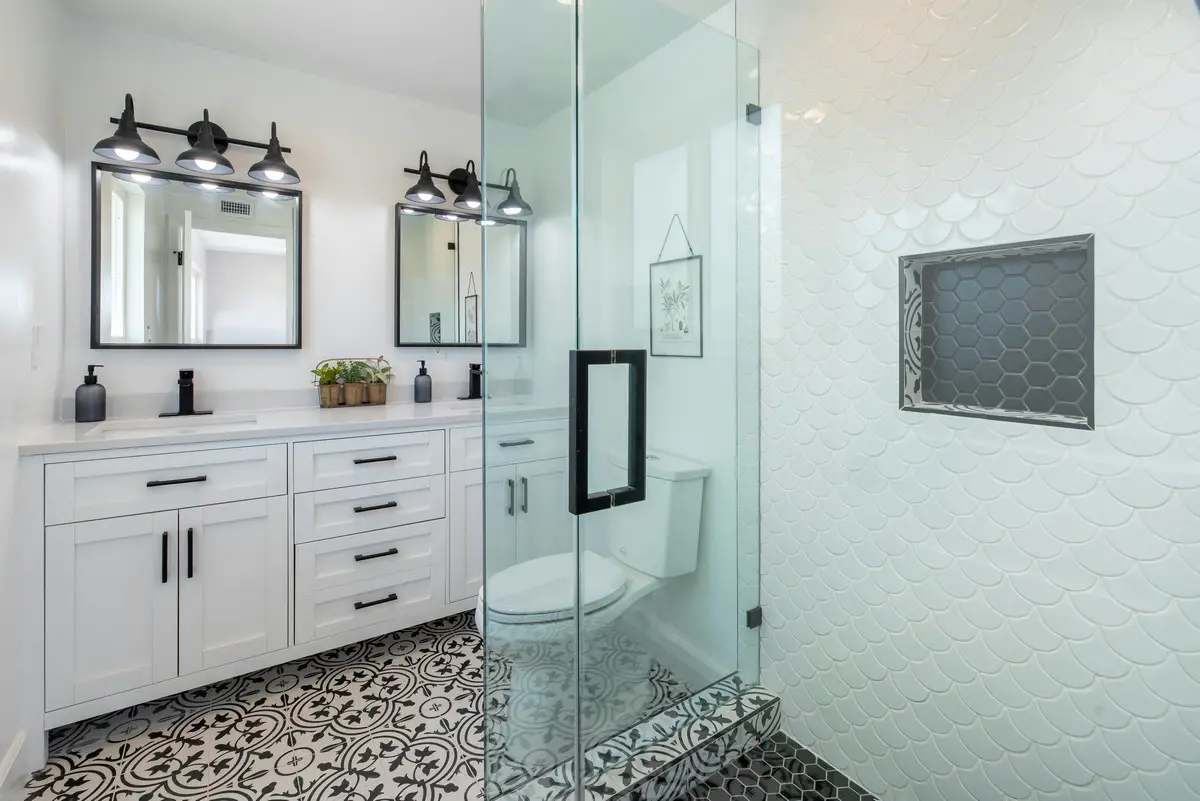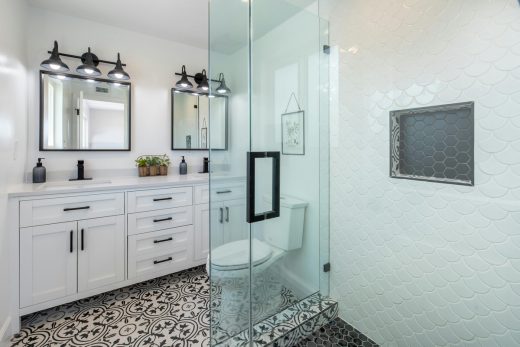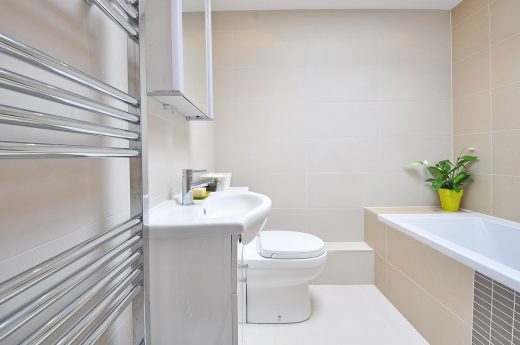How to make your bathroom remodel functional, House decorating tips, Property renovation design
How to Make Your Bathroom Remodel More Functional
20 August 2024
Bathrooms are one of the most frequently used spaces in any home, yet they’re often overlooked when it comes to functionality. A well-designed bathroom can significantly improve your daily routine and increase your home’s value.
In fact, according to the National Association of Realtors, bathroom remodels can recoup up to 60% of their cost when you sell your home. This article will guide you through various aspects of a functional bathroom remodel, ensuring that your investment pays off in both comfort and value.
Assess Your Current Space and Needs
Before diving into a remodel, take time to evaluate your existing bathroom and identify pain points. Understanding your specific needs will help you prioritize features and make informed decisions throughout the remodeling process. If you’re planning a bathroom remodel in Columbus, Ohio, it’s essential to think about your long-term plans. Are you remodeling for yourself or with resale in mind? Take the time to create a detailed list of must-haves and nice-to-haves. This list will serve as a valuable reference point when you’re faced with decisions and potential compromises during the remodel.
Consider the following:
- Traffic flow: How many people use the bathroom regularly? Is there a rush hour in the morning that causes conflicts?
- Storage needs: Are you constantly struggling to find space for toiletries and linens? Do you have specialty items that require unique storage solutions?
- Accessibility: Do you need to accommodate family members with mobility issues? Are you planning for aging in place?
- Water usage: Are you interested in reducing your environmental impact and lowering utility bills?
Optimize Layout for Efficiency
The average person spends about 30 minutes in the bathroom each day, totaling over 182 hours per year. This time can increase significantly for families or individuals with specific grooming routines. A well-thought-out layout can save you time and frustration. Consider these layout tips:
- Follow the “work triangle” concept: Place the toilet, sink, and shower/tub in a triangle formation for easy movement. This concept, borrowed from kitchen design, can be equally effective in bathrooms.
- Allow for proper clearances: The National Kitchen and Bath Association recommends at least 30 inches of clearance in front of fixtures and cabinets. This ensures comfortable use and easy cleaning.
- Consider the door swing: Ensure that the bathroom door doesn’t interfere with the use of fixtures or cabinets when opened. If space is tight, consider a pocket door or a door that swings outward.
- Zone the space: If possible, create distinct zones for different activities. For example, separate the toilet area from the grooming area for privacy and simultaneous use.
- Plan for future needs: If you’re considering adding a double vanity or expanding the shower in the future, factor this into your initial layout.
Maximize Storage Solutions
Adequate storage is crucial for maintaining a clutter-free, functional bathroom. The average American household owns 300,000 items, and many of these end up cluttering bathrooms. Incorporate these storage ideas:
- Vanity with drawers: Drawers are more accessible than cabinets and can be organized more efficiently. Consider deep drawers for larger items and shallow ones for smaller toiletries. Drawer organizers can further maximize space utilization.
- Medicine cabinet: A recessed medicine cabinet provides storage without taking up floor space. Look for models with adjustable shelves and internal outlets for electric toothbrushes or razors.
- Open shelving: Install open shelves for frequently used items and decorative storage. This can also make a small bathroom feel more spacious.
- Niche in shower: A built-in shower niche keeps toiletries organized and easily accessible. Consider multiple niches at different heights to accommodate various family members.
- Over-toilet storage: Utilize the space above the toilet with shelving units or cabinets. This often-overlooked area can provide valuable storage.
- Towel storage: Install towel bars on the back of doors, or consider a heated towel rack for both storage and luxury.
- Hidden storage: Look for opportunities to create hidden storage, such as tilt-out trays in front of sinks or pull-out cabinets in narrow spaces.
Improve Lighting
Proper lighting is essential for both functionality and ambience. The Illuminating Engineering Society recommends a minimum of 75 lumens per square foot in bathrooms. Consider a layered lighting approach:
- Ambient lighting: Install ceiling fixtures or recessed lights for overall illumination. Consider dimmable options to adjust the mood and brightness as needed.
- Task lighting: Place sconces or vertical fixtures on either side of the mirror to eliminate shadows when grooming. Ensure the light source is at eye level to minimize unflattering shadows.
- Accent lighting: Use small LED lights in niches or under floating vanities for a luxurious touch. This can also serve as nighttime lighting without being too bright.
- Natural light: If possible, maximize natural light with windows or skylights. Consider privacy films or frosted glass for windows to maintain privacy while allowing light in.
- Color temperature: Choose bulbs with a color temperature around 2700K-3000K for a warm, flattering light. For applying makeup, bulbs with a higher color temperature (around 5000K) can provide more accurate color rendering.
- Smart lighting: Consider smart bulbs or switches that allow you to control color temperature and brightness from your phone or through voice commands.
Enhance Ventilation
Proper ventilation is crucial for preventing mold and mildew growth, which can lead to health issues and costly repairs. The Home Ventilating Institute recommends a fan that can change the air in your bathroom 8 times per hour. Choose a fan based on your bathroom’s square footage and consider these features:
- Humidity sensors: These automatically turn the fan on when moisture levels rise, ensuring the fan runs as long as necessary.
- Timer switches: Ensure the fan runs for a set time after you leave the bathroom. This is particularly useful for guest bathrooms or for family members who might forget to turn off the fan.
- Quiet operation: Look for fans rated at 1.0 sones or less for whisper-quiet performance. This is especially important for bathrooms adjacent to bedrooms.
- Dual-function fans: Some fans come with built-in heaters or lights, saving ceiling space and providing multiple functions in one unit.
- Energy efficiency: Look for ENERGY STAR certified fans, which are 60% more efficient than standard models.
- Decorative options: Ventilation fans now come in a variety of styles to complement your bathroom decor.
Focus on Water Efficiency
Water-efficient fixtures not only reduce your environmental impact but also save money on utility bills. The EPA estimates that fixing easily corrected household water leaks can save homeowners about 10 percent on their water bills. Consider these water-saving options:
- Dual-flush toilet: Allows you to choose between a full or partial flush, potentially saving thousands of gallons per year. Look for WaterSense labeled models for optimal efficiency.
- Faucet aerators: Can reduce water flow by up to 30% without affecting performance. These are inexpensive and easy to install on existing faucets.
- Tankless water heater: Provides hot water on demand, reducing energy waste. While more expensive upfront, they can lead to significant long-term savings, especially in households with high hot water usage.
- Low-flow showerheads: Modern low-flow designs use air-infusion technology to maintain strong water pressure while reducing water usage.
- Greywater systems: Consider installing a system that reuses water from sinks and showers to flush toilets. While more complex to install, these systems can dramatically reduce water consumption.
- Smart water monitors: These devices attach to your main water line and can alert you to leaks or unusual usage patterns, helping you catch and fix issues quickly.
- Shower timers: Simple devices that can help family members be more mindful of their shower duration.
How to make your bathroom renewal functional Summary
This guide on bathroom remodeling focuses on enhancing functionality through careful planning and quality materials. Key points include optimizing the layout for daily use, choosing durable fixtures, and implementing efficient storage solutions.
It also highlights the importance of good lighting, strong ventilation, and universal design principles to ensure accessibility and safety for all users. Additionally, water-efficient features are emphasized to conserve resources and reduce utility bills.
Comments on this guide to How to make your bathroom remodel functional article are welcome.
Bathrooms
Bathrooms Posts
Bathroom Flooring Best Options Guide
Top ways to upgrade and update your bathroom
Buildings
Residential Architecture Articles – selection:
Comments / photos for the How to make your bathroom remodel functional page welcome.




